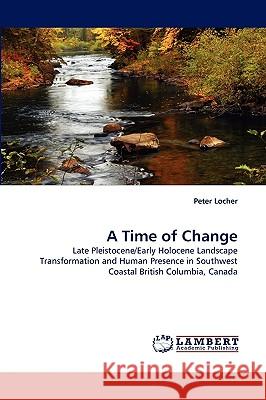A Time of Change » książka
A Time of Change
ISBN-13: 9783838343723 / Angielski / Miękka / 2010 / 168 str.
This publication is designed to increase awareness of the value of late-glacial landforms in the study of early settlement patterns in southwest coastal British Columbia. Knowing local paleoenvironmental events, such as glacial advances, relative sealevel changes and paraglacial landscape modifications, is critical to understanding potential early site locations. A lack of systematic surveys, poor site visibility, deep alluvial burial, and site locations away from modern shorelines have been identified in this work as main reasons for the lack of evidence for late Pleistocene human occupational sites. Field research of raised landforms, such as paleo-deltas, provided data on local late Pleistocene and early Holocene paleoenvironmental history. I conclude that a comparison to other research projects along the Pacific Northwest might highlight new ideas and techniques, applicable for the study of a hypothesized early marine/estuarine oriented human population.
This publication is designed to increase awareness of the value of late-glacial landforms in the study of early settlement patterns in southwest coastal British Columbia. Knowing local paleoenvironmental events, such as glacial advances, relative sealevel changes and paraglacial landscape modifications, is critical to understanding potential early site locations. A lack of systematic surveys, poor site visibility, deep alluvial burial, and site locations away from modern shorelines have been identified in this work as main reasons for the lack of evidence for late Pleistocene human occupational sites. Field research of raised landforms, such as paleo-deltas, provided data on local late Pleistocene and early Holocene paleoenvironmental history. I conclude that a comparison to other research projects along the Pacific Northwest might highlight new ideas and techniques, applicable for the study of a hypothesized early marine/estuarine oriented human population.











